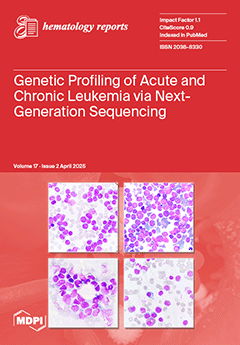Background: Limited data exist on primary palatine tonsil Non-Hodgkin lymphoma (NHL) from regions with constrained healthcare access. This study investigated this malignancy in Western and South-Western Romania, comparing lower-stage (Ann-Arbor I-III) and advanced-stage (IV) disease.
Methods: A retrospective cohort study (2010–2019)
[...] Read more.
Background: Limited data exist on primary palatine tonsil Non-Hodgkin lymphoma (NHL) from regions with constrained healthcare access. This study investigated this malignancy in Western and South-Western Romania, comparing lower-stage (Ann-Arbor I-III) and advanced-stage (IV) disease.
Methods: A retrospective cohort study (2010–2019) at a tertiary referral hospital included 59 patients with primary palatine tonsil NHL. Data on demographics, clinical presentation, comorbidities (including viral hepatitis B/C), histology, International Prognostic Index (IPI) score, treatment, and outcomes were collected. Statistical comparisons between lower-stage (
n = 26) and advanced-stage (
n = 33) groups were performed.
Results: A high proportion presented with advanced-stage disease (55.9%). The advanced-stage group had significantly more B symptoms (90.9% vs. 69.2%,
p = 0.038) and elevated LDH levels (93.9% vs. 57.7%,
p = 0.013). Viral hepatitis B and/or C infection was more frequent in advanced-stage disease (30.3% vs. 15.4%,
p = 0.44). Combined chemoradiotherapy was more commonly used in lower-stage disease (38.46% vs. 12.12%,
p = 0.019). There was no statistically significant difference in relapse rates between the groups.
Conclusions: This study highlights the substantial burden of advanced-stage primary palatine tonsil NHL in Western Romania, suggesting a need for improved early detection. The association between viral hepatitis and advanced-stage, although not statistically significant, warrants further investigation. These findings may inform tailored management approaches in resource-constrained settings.
Full article






